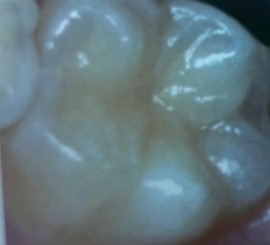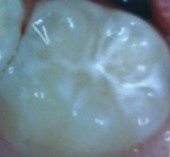What are sealants?
Sealants protect teeth and help to prevent tooth decay. They are most often placed in children and teenagers although, some adults may also benefit from sealants too. Tooth decay can start soon after the first set of teeth come in and often begins on the chewing surfaces of the back teeth, or the molars. These surfaces often have pits and grooves making it making it more difficult to clean by toothbrush alone. If a tooth is stained or has mild decay, your dentist may suggest you get a sealant.A dental sealant is a plastic material (resin) applied to the surfaces of the molars. First, the tooth is cleaned and the surfaces are prepared to help the sealant stick to the tooth. Then the sealant is placed onto the surface of the tooth and a special light is used to help the sealant harden. The sealant acts as a barrier, sealing out food, bacteria, and plaque. They usually white or clear in color making them unnoticeable when you smile or talk. Sealants may last several years before needing to be replaced. Eating crunchy hard foods and chewing on ice can also break the sealants down. Your dentist will determine if your sealants need to be reapplied. While sealants help protect your teeth, daily preventative oral care at home along with regular exams and cleanings at the dentist's office are important in maintaining good oral hygiene.




